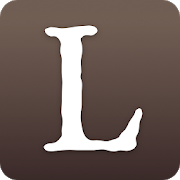Weaving Fate is a woo book. The author believes in magic and assumes you do, too. I found this strangely refreshing, to be honest, and it made it easy to separate out the useful stuff, for my intents and purposes.
What I took from it, when you remove the fluff, were two meditation exercises (one of which won’t work for me), a journaling practice, and a bunch of new entries on my to-read list. That’s more than decent for a 170 page book that I expected to feel at best ambiguous about.
Even apart from the useful ideas, I liked several things about this book. For one, it emphasises that there are no one-size-fits-all solutions, and that the proposed protocols and techniques will probably be modified by the reader – a strict improvement over most of self-help literature. He also explains all the words and concepts: “Liminal means …”, and so on. He also cites his sources, and notes where he has a deep or shallow understanding of them, or where he changes his use of their terms. Oh, and he gave me the idea of recording my own guided meditation, which I should’ve thought of on my own.
These are the four techniques that he introduces, summed up very roughly:
Black Book
This is a journaling exercise to support change in your life. You write journal entries from the POV of your future self, with lots of details – so you never express intent, you always write about factual experience.
Notes: Don’t worry about continuity, instead use it to explore what you really want. Tone matters more than specifics, but be specific nonetheless. Focus on emotions and sensory details. Follow your dreams/vibes/themes/intentions to their conclusions and write about that. Focus on what outcomes look like and feel like. What are the fruits of your labour, what do they taste like? Move the markers of what is possible for you. If you are working on hitting beginner level, talk about going semi-professional.
The book surrounds the journal with a lot of magic, consecrating it, having you alway use the same pen etc etc, but the practice in itself sounds intriguing enough that I’m going to try it.
Corridor
This is a visualisation exercise: You visualise a corridor / place with a lot of doors (settings will vary). Stepping through doors gives you access to a situation in your past, which you can then re-interpret or re-shape. This will in turn change how you experience present and future events, since your perception is rooted in your past. It is not exactly used to create new memories – more to introduce a dissonance in a comfortable story you’ve told yourself, and that is keeping you back.
So you will (after entering a meditative state and walking through one of the doors) encounter your younger self, probably in a less-than-positive situation, and interact to give advice and hugs, recontextualise, tell yourself what you needed to hear back then. Since you’re in control, you can (and should) decide in advance that your younger self will be receptive and open, which situation you will visit, and that the whole thing will be beneficial.
Fever Stone
This is a trauma visualisation exercise, best I can tell, accompanied by some symbolism (he wants you to keep and use a stone. I’m ignoring that part). I didn’t enjoy reading this chapter, so this is just the very abridged version:
You practice visualising a temple/church, seeing yourself laid out in there (alive, tho). Practice visualising a stone in your body (frozen trauma), that you remove and burn up. Also practice visualising feeding warmth/energy to yourself/your stomach, where it is stored to be released when needed. Combine the two, plus the earlier corridor exercise, by stepping into the aftermath of a traumatic event (or for complex trauma, a memory of it activating), and visualise removing the trauma stone, burning it and feeding the energy to yourself.
Desire inventory
This technique isn’t even listed with a name, and just added in the very end. I’m calling it “Desire Inventory”, after the Deepest Fear Inventory mentioned in Existential Kink.
Write a list of everything you want. Big desires, small “a bagle would be nice”, anything goes. Update constantly. Once you have at least 50 (and whenever you have collected a new batch), transfer them to an index card per desire – but in the form of affirmations (so “I’d like a bagle” turns into “I’m ecstatic that I have a bagle”). Read them out loud, in the most enthusiastic over-the-top way you can (practice for some days before proceeding), and pay attention to your felt sense. Sort into legitimate/not legitimate/maybe legitimate. Discard the ones you don’t really feel like (maybe repeat for a few days, if you’re not sure), then look at what remains. Maybe re-write as desires. Group in ways that feel right – look at the clusters, interrogate them, etc.
Bibliography
- Carroll: Liber null, Liber kaos, Psychonaut [chaos]
- Thomas Hanna: Somatics
- Aidan Wachter: Six Ways
- Ray Sherwin: Theatre of Magic
- Gordon White: The Chaos Protocols






